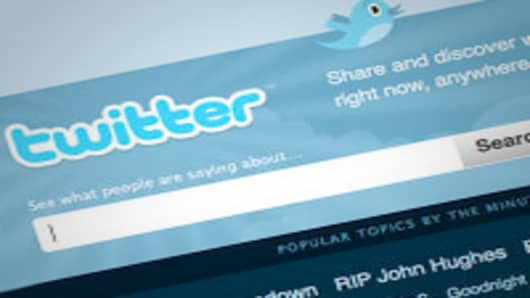For a company that doesn’t have a business model, Twitter sure is good at courting businesses. In March, Nielsen Online reported that the site's audience was growing at 1,382 percent. Some of that growth is due to corporate America’s adoption of the service. Twenty-nine percent of Fortune 100 companies have Facebook fan pages and 54 percent of them use Twitter, according to Proof Digital Media. Twitter offers businesses an effective outlet for coupons, contests, and communication, all of which contribute to branding and customer engagement.
The combination of growth and businesses’ embrace has paved the road for new, derivative companies that sell Twitter to Big Business. These companies are trying to build a business model off of Twitter clients—applications and services that allow tweeters to streamline the user experience.
A few key players are already emerging from the many available Twitter clients. CoTweet and HootSuite are two that design their platforms specifically for businesses, mindful of the nature and work flow of most companies. And get this: They’ve even got the gall to charge their users. These two companies are some of the first to try to answer one of social media’s biggest questions: How do you turn a profit if you’re basing your business on a free service?
CoTweet, a San Francisco-based company, launched its enterprise program earlier this month, which marks its first shot at making money off of Twitter. Cost of entry: $1,500 per month. What do you get for that? CoTweet users can assign tasks, schedule tweets, and designate multiple logins for the same account, among other tricks available to all CoTweet users. But now enterprise-program users will have access to greater data storage, more detailed analytics (reach into certain markets, volume of engagement with customers, response rates), and a heightened level of service from CoTweet. To reiterate, this costs just $1,500 per month.
So far, the enterprise program is running on an invitation-only basis and is looking to use lessons learned from its initial group of clients (including McDonald's, Whole Foods, and Coca Cola) to improve.
"The reason that we're rolling it out by invitation only is that we want to make sure we can support the customers that we sign on," CoTweet chief executive Jesse Engle told The Big Money. "We’re looking for specifically those companies who have executive support with what they're doing in social media and who’re in a position to really provide input and to partner with us as we continue to define the emerging requirements for what clients are looking for."
Needless to say, $1,500 a month can be steep for small- and medium-sized companies. That's why HootSuite, which offers many of the same functionalities as CoTweet (i.e., multiple users, data storage, and work flow optimization) plans to offer a less expensive premium version for its users. When HootSuite begins to provide its paid-for service, it will be less expensive than CoTweet's enterprise program.
Ryan Holmes, HootSuite's CEO, said HootSuite's core client base is "marketers and mom-and-pops," which probably won't pay a high premium for such services. Of course, the HootSuite homepage boasts of marquee clients like Disney, National Geographic, and the NBA. Thus far these companies have used HootSuite like everybody else—for free. The challenge for HootSuite is to get both these big guys and the mom-and-pop outfits to sign up for the paid version.
There's plenty of market share for the taking. Both Engle and Holmes claim not to be in competition with Twitter, yet any inroads they make will likely siphon traffic away from Twitter, the Web site, while maintaining activity on Twitter, the network. Twitstat—a service that measures the market shares of Twitter clients—reports that about 20 percent of Twitter users still use the basic Twitter Web page. Meanwhile, HootSuite sits at nearly 5 percent and CoTweet is at just over 0.5 percent.
Grabbing shares in this market, though, is tough, as the competitors vary widely in their strengths. Some Twitter clients are purely Web-based, some provide desktop software, and some focus on mobile applications. But many tweeple use all three. Plus, clients are primarily competing for users who are difficult to pin down. Nothing forces somebody to keep tweeting on any given client. Experimentation is rampant among hardcore tweeters.
It is this experimentation, presumably, that explains the future plans for these Twitter clients. CoTweet will expand to include similar functionalities for companies using Facebook and plans to introduce a less expensive middle tier for those companies unwilling to cough up $1,500 a month. HootSuite, meanwhile, has already expanded its services to include other social media (Facebook and LinkedIn), and its iPhone application is soon to come.
By now, it’s clear: Companies want Twitter. And CoTweet and HootSuite want companies. But, with the fickle nature of users and the plethora of free options, will all the tricks behind the pay wall be enticing enough to make CoTweet and HootSuite worthwhile? To be sure, as the social networking market continues to mature, perfect price-points and strategies to keep users will come. And newcomers may still emerge. But for now, these two—because they’ve tried something—are ahead of the game.


